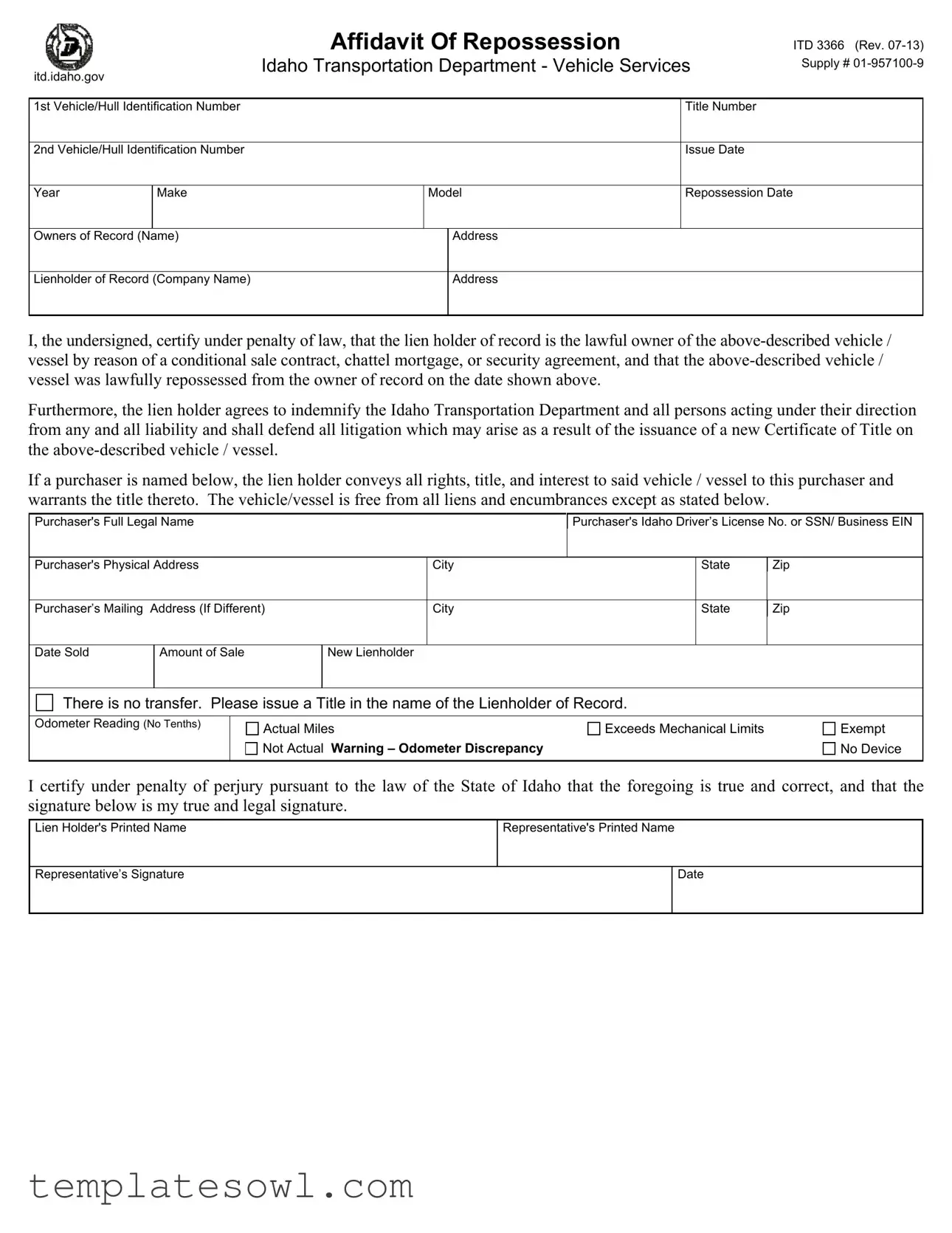What is the DMV Affidavit of Repossession form?
The DMV Affidavit of Repossession form is a document used to confirm that a lienholder has legally repossessed a vehicle or vessel. This form certifies the ownership of the lienholder based on a prior agreement, such as a conditional sale contract or a security agreement.
Who needs to fill out this form?
This form is typically completed by a lienholder, such as a bank or financial institution, after repossessing a vehicle or vessel from the owner. It ensures that the transfer of ownership and titles reflects the current legal status of the property.
What information is required on the form?
You will need to provide various details, including the Vehicle or Hull Identification Number, title number, date of repossession, and the names and addresses of both the owner and the lienholder. Additionally, the form requires information about any purchaser if applicable, including their legal name, driver’s license number or taxpayer ID, and addresses.
What happens after I submit the form?
Once submitted, the Idaho Transportation Department processes the affidavit. If approved, a new Certificate of Title will be issued in the name of the lienholder or the purchaser, if one is designated. This must be done in accordance with Idaho law to ensure legal compliance.
Why is this form important?
This form protects both the lienholder and the state by providing legal proof of repossession. It helps prevent disputes regarding ownership and assures that the vehicle or vessel is free of any outstanding liens, barring those that are disclosed. This makes the transition smoother for future sales or registrations.
What penalties are associated with false information on this form?
Providing false information can lead to serious legal consequences. The form requires that you certify the truthfulness of the statements under penalty of law. This means that if you knowingly provide inaccurate or misleading information, you could face fines or other legal repercussions.
Can I use this form for any vehicle or vessel?
This form is specifically designed for vehicles and vessels within Idaho jurisdiction. It's important to verify that your circumstances meet the requirements for using the DMV Affidavit of Repossession. Always consult the relevant transportation department if you are unsure.
How do I obtain this form?
The DMV Affidavit of Repossession form can be obtained directly from the Idaho Transportation Department's website or their physical office. Ensure you're using the latest version to prevent any processing delays.

